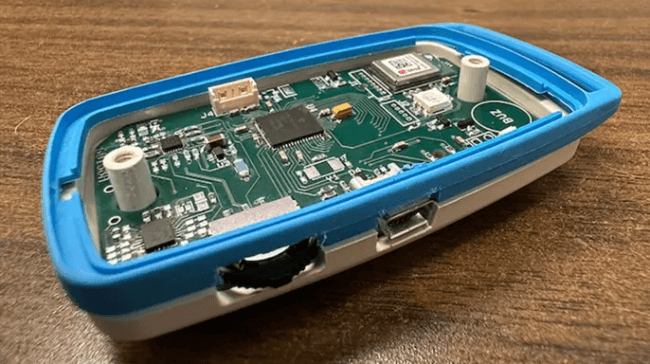BlueSleuth-Lite: The Active Surveillance Device for Apple AirTags
In The News | 22-02-2023 | By Robin Mitchell
A new crowdsourced project is being developed to fight against the misuse of Apple AirTags, which use Bluetooth, UWB and GPS technology to track the location of personal devices. While AirTags are designed to help users track their personal belongings, they can also be misused for stalking and other crimes, posing a danger to personal safety and privacy. The project aims to detect and track the use of AirTags in a mesh network to prevent such misuse, highlighting the growing need for active personal surveillance and location detection to ensure the safety and privacy of individuals. What challenges has the Apple AirTag introduced, what does the new device propose to do, and could this be the first step in active personal surveillance?
What challenges has the Apple AirTag introduced?
To say that the Apple AirTag has introduced problems is somewhat unfair as Apple were not the first to develop tracking technologies. However, it is fair to point out that Apple has made tracking devices highly popular (due to their large market share and reach), and their technology certainly has helped millions worldwide.
The most basic use for AirTags is to attach them to objects of significant importance, such as keys and cars, which enables owners to see exactly where they are. Another area of application that is seeing a massive trend is luggage tracking. It is not uncommon for luggage to go “missing” in transit, and Apple AirTags has helped countless individuals find their luggage. In fact, these tracking devices have even led to arrests of airport employees found to be stealing luggage and bringing them home.
However, others have been using AirTags to commit crimes by planting them onto unsuspecting individuals or property. For example, some criminals attach AirTags to the underside of expensive vehicles to find where the owner lives. From there, the vehicle can be stolen or, worse, the home targeted by armed robbers. The AirTag can also be placed inside an individual’s bag, allowing for all movements to be tracked. This provides immense power to those who want to stalk specific people.
To fight against these challenges, Apple has released apps for both Apple devices and Android smartphones that are capable of detecting these tags and will alert users if an AirTag has been found to move with them. But one issue faced by such apps is that they don’t immediately notify users upon detecting tags but instead wait for a set time before alerting the user. This makes it hard to track AirTags in real time and can allow for some degree of tracking before an alert is issued.
Apple has also changed the firmware on AirTags so that they start to beep after 24 hours. However, users have already discovered how to open their AirTags and disable the beeper.
Crowdfunded BlueSleuth-Lite Actively Detects AirTags
Recently, a new device called BlueSleuth-Lite has managed to raise £10,000 via crowdsourcing. The device aims to provide users with an active surveillance device that will be able to detect and identify all nearby Apple AirTags.
The battery-powered device is chargeable via a mini-USB cable or wireless charging pad and can easily be attached to a keychain or ring. As the device is specifically designed for AirTag detection, it is more sensitive and accurate compared to smartphone apps offered by Apple and Android, enabling individuals to quickly identify and locate all tags. At the same time, the device is not restricted to timers, meaning that it can be used to detect tags immediately. The designers of the BlueSleuth-Light have based their design on their pre-existing BlueSleuth, which can identify the presence of card skimmers placed onto pin machines and ATMs.
While the device is still in the crowdsourcing stage, it is likely that the device will soon be available to the public thanks to its video demonstration and the use of previous technologies that have been proven to work. Of course, the modest amount of funding that the project has raised suggests either a low amount of public interest or a lack of marketing, which could see the project eventually fail.

Could this be the first step to active personal surveillance?
Even if this device doesn’t become a commercial success, it could certainly be the stepping stone to a future where, to maintain privacy, every individual must constantly monitor themselves and the environment around them. Such devices could also be designed to detect Wi-Fi, Bluetooth, and other radio technologies and alert users when suspicious activity is detected.
Surveillance tools may also be integrated into smartphones, capable of monitoring peripherals such as cameras and microphones, to identify individuals who may be lurking in the background. For example, a phone’s camera may be used to look out for faces that continue to show up, and if they do, it may alert the user that someone is following them.
As the use of tracking devices increases, there is a greater need for personal safety and protection, but current technology found in smartphones cannot provide a sufficient defence. It is likely that individuals will need to become their own National Security Operations, monitoring devices, calls, and data that is sent to and from their devices.

